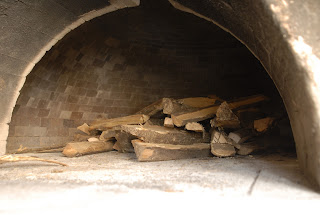 Reason number 2- Weather: Except in certain locations in the world where temperatures are generally mild and dry, a brick oven is simply more fun if you are not running through rain, snow, or high winds to tend and bake your food.
Reason number 2- Weather: Except in certain locations in the world where temperatures are generally mild and dry, a brick oven is simply more fun if you are not running through rain, snow, or high winds to tend and bake your food. Reason number 3- Bugs: Most places in the world have bugs. Mosquitoes can make an outdoor cooking experience less than pleasant. Placing an oven in a three season room or a screened structure makes the baking experience your experience of food, not the bug's.
Reason number 3- Bugs: Most places in the world have bugs. Mosquitoes can make an outdoor cooking experience less than pleasant. Placing an oven in a three season room or a screened structure makes the baking experience your experience of food, not the bug's. Reason number 4- Economics: Once we commit our financial resource to a brick oven we tend to view it in the long run in proportion to how much it pays off, that is the ratio of money spent to amount of use. So we purchase an RV if the cost will outweigh hotel expenses (an accessibility). A brick oven that becomes part of your weekly cooking experience will justify it's expense.
Reason number 4- Economics: Once we commit our financial resource to a brick oven we tend to view it in the long run in proportion to how much it pays off, that is the ratio of money spent to amount of use. So we purchase an RV if the cost will outweigh hotel expenses (an accessibility). A brick oven that becomes part of your weekly cooking experience will justify it's expense.Reason number 5- Your cooking life: A brick oven, placed within easy use of your living space, will become a natural part of your cooking life. The process of starting a fire, roasting food in the oven mouth as it heats, and baking for up to 30 hours after firing will become an easy rhythm. The initial fire will ad beauty to your living space while preparing the oven for cooking temperatures.




























